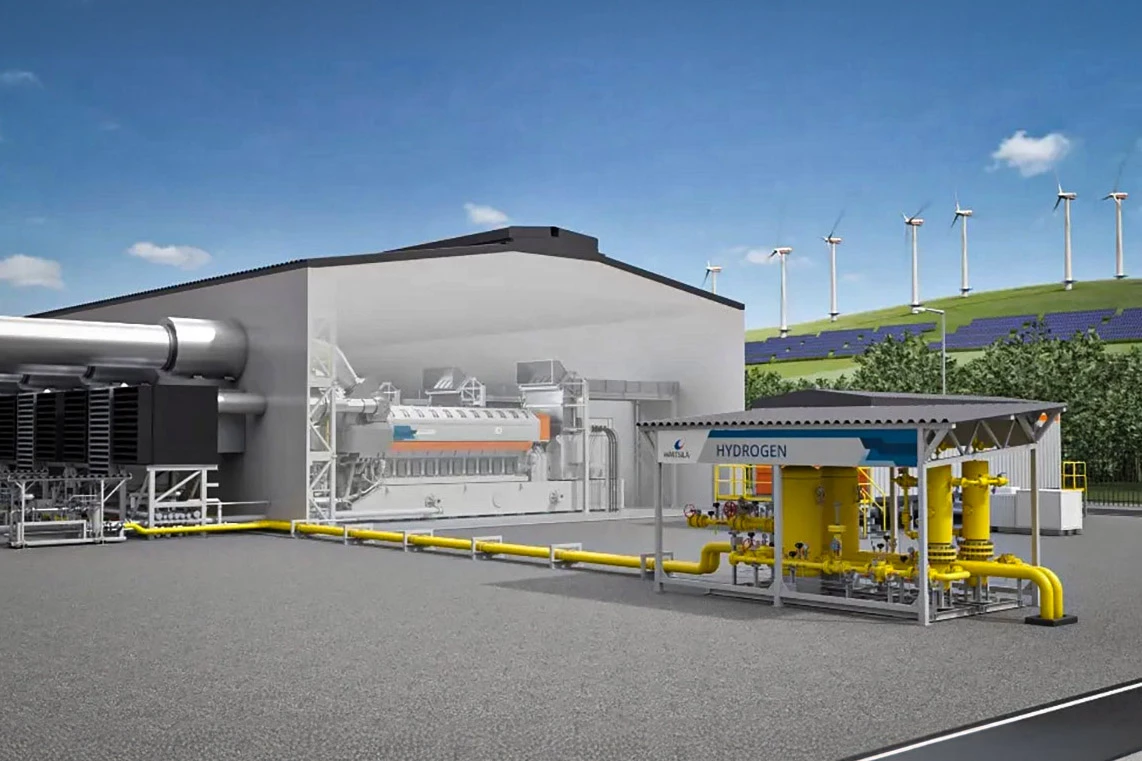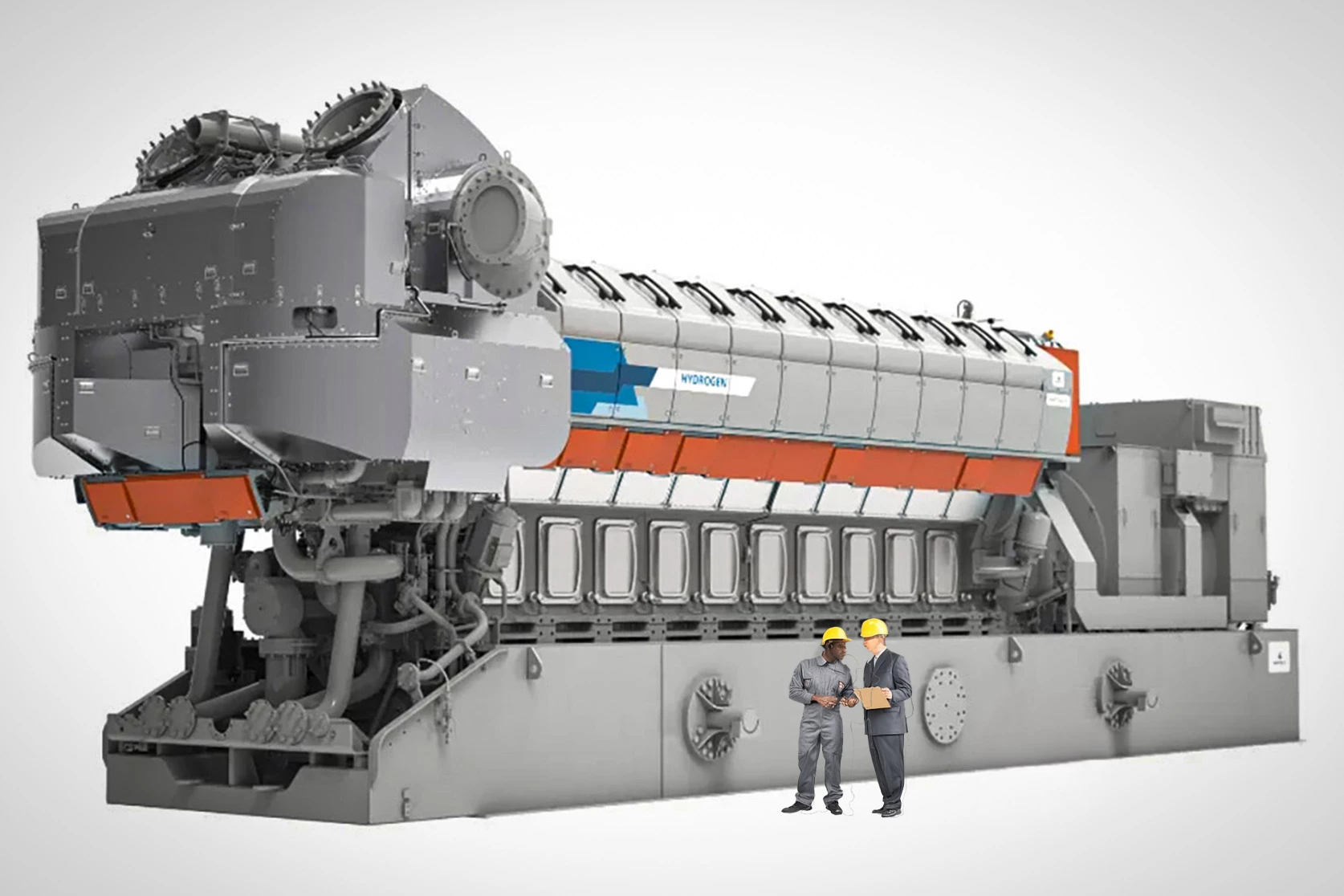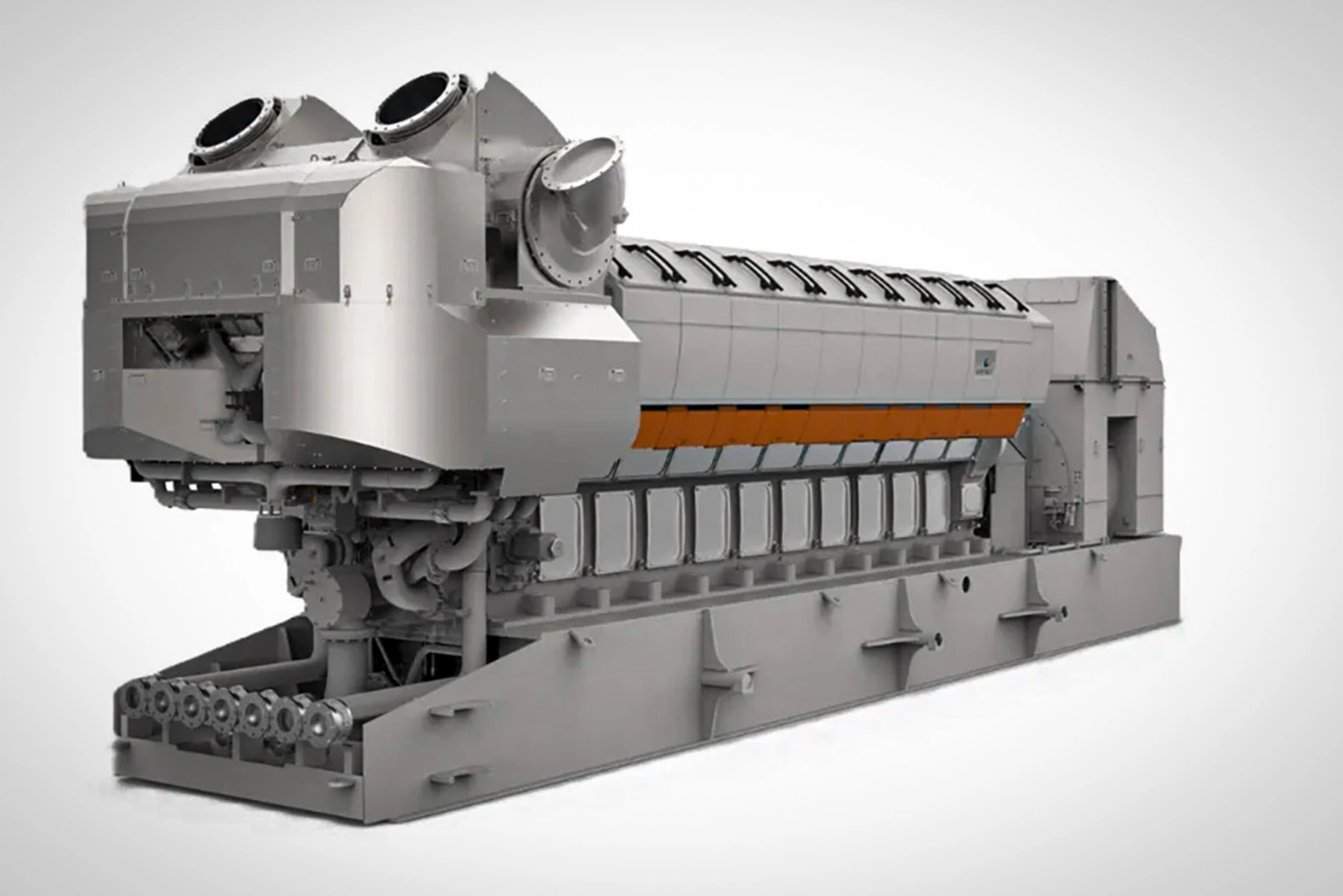The Wärtsilä 31 engine is in the Guinness Book of World Records for being the most efficient 4-stroke marine engine ever made in its class. It also boasts the highest power per cylinder in engines of equivalent bore size. It can be configured in 8 to 16 cylinders and with a power output ranging from 4.6 MW to 10.4 MW at 720 and 750 rpm.
This Finnish company is best known for making the world's largest combustion engines – notably the 89 ft (27 m) tall, 44 ft (13 m) long, 110,000 horsepower RTA96-C. The Wärtsilä 31 engine is a fair bit smaller, maxing out at 15.4 ft (4.7 m) high and 28.8 ft (8.7 m) long, and running on fossil fuel, it can crank out up to 13,142 horsepower (9.8 MW).
The cylinder bore and stroke (12.2 x 16.9 inches, or 31 x 43 cm) sound enormous if you're coming from the auto/moto world, but compared to some of the company's bigger engines, which have cylinders big enough to walk into, they're relatively compact.
Converted to a generator, the hydrogen-ready 31SG-H2 version can run on natural gas, or a blend of natural gas and 25% hydrogen – or it can be upgraded to run on 100% hydrogen. There's also a flexible-fuel 31H2 designed to run natively on full hydrogen, but also accepting natural gas or blended fuels.
Both promise to be the world's largest hydrogen-powered generators when rolled out – assuming there's enough hydrogen available to run them.
The hydrogen power station is designed for firming up a renewables-based grid, quickly ramping up or down to support intermittent clean energy sources such as solar and wind, with no minimum up or downtime and the ability to ramp up and synchronize with the power grid in as little as 30 seconds with the push of a button. By using hydrogen, Wärtsilä can generate electricity 100% carbon-free.

Anders Lindberg, President of Wärtsilä Energy stated, "We must be realistic that natural gas will play a part in our power systems for years to come. Our fuel-flexible engines can use natural gas today to provide flexibility and balancing, enabling renewable power to thrive. They can then be converted to run on hydrogen when it becomes readily available, future-proofing the journey to net zero."
Wärtsilä's power plant concept has been phase 1 certified by TÜV SÜD, an organization focused on protecting people and the environment and ensuring regulatory compliance. It must pass two more certifications before ground can be broken. Its hydrogen-ready engines are expected to be available for delivery by 2026.
With over a million running hours and over 1,000 MW of installations so far, Wärtsilä has a proven track record of reliability. We're interested to learn what kind of efficiency this massive machine might run at, and how it might compare in terms of industrial-scale, long-term economics against a large fuel cell type of operation, which could convert the hydrogen directly back into electricity and water.
Source: Wärtsilä





